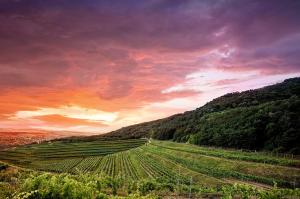
Podgoria Silvania
Twenty minutes from Zalāu, whose name generally translates from the old Traco-Dacian language as “The Valley of Wine”, lies one of the oldest and most northern wineries in untouched Romania, Podgoria Silvania. Dating back to 1820, the winery is located in the Silvania Hills, an area where archeologists found evidence of commerce and rare Dacian silver coins dating back to 1600. Podgoria Silvania’s first cellars were dug from caves over two centuries ago by the Jewish community that populated the area at that time.
Later, in 1960, researchers discovered that the caves held a constant temperature of 12 degrees Celsius and the accompanying humidity gave rise to a unique form of mold which also assists in providing optimal aging in the cellars. After this discovery, additional cellars were dug and today, Podgoria Silvania’s incredible labyrinth of cellars (which are located 60 meters underground) stretches over 3.5 kilometers. 
Fascinating history is not the only remarkable thing about the winery. Podgoria Silvania has a 45-year old tradition of specializing in sparkling wines. The wines are made in the Traditional Method (second fermentation in bottle) from Pinot Noir, Muscat Ottonel, Feteascā, and Chardonnay grapes and are aged on lees for 2-3 years.
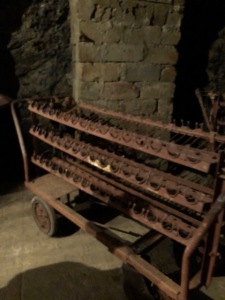
Bottle-shaking cart
Hand-turning of the bottle is still done and the winery uses a special cart to help shake the bottles (remuage). This helps to move the wine’s sediment up into the cork so that it can be more easily removed later. I had not seen a cart like this before nor the unique way of storing the bottles here with sticks laid between. It still makes me nervous to see this picture!

Wine Storage with Sticks
Several sparkling styles are available including Brut Natur (1-2% residual sugar), Sec (3-4% residual sugar), Demi Sec, and Dulce. Due to the area’s cooler climate and Feteascā grapes, higher acidity gives their sparkling wines a unique and delicate freshness which makes them stand apart from many others.
Podgoria Silvania also makes dry wine from Feteascā, Traminer, Pinot Noir, Muscat Ottonel, Riesling, and Chardonnay from their 50 hectares of vineyards (planted in 2013-2014).
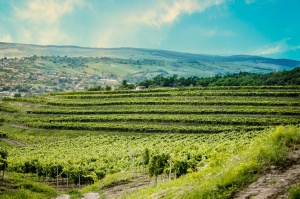
Podgoria Silvania’s Vineyards and Hills
I had the great pleasure to visit this beautiful area in northwest Romania a few years ago and am still enchanted by its idyllic rolling hills, iconic hay bales, and farmers still plowing fields with horses and hand-held harnesses. The land is stunning with much of it unpopulated and the small town of Zalāu a place where people still walk to the daily market for fresh fruit and vegetables. I had never had a strawberry like I tasted there – completely fresh and juicy with not a touch of pesticide ever a thought.
Romanian wine is slowly starting to hit the wine world radar with a few mentions popping up in wine magazines of late but its potential is far greater than anything you’ll read about. The pristine land, continental climate moderated by the Carpathian Mountains, and local grape varieties Feteascā Albā (white), Feteascā Regalā (white), and Feteascā Neagrā (red) produce interesting and substantive wines with some international varieties faring well there too.
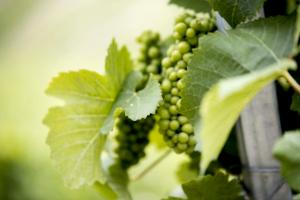
Feteascā grapes
Podgoria Silvania produces 300,000 bottles a year (all of it from grapes grown on their estate) and exports much of it to Russia, Germany, Poland, and even France (a source of great pride for the winery). Prince Charles himself has apparently been a long-time fan of Romania and currently has two homes in northwestern Romania in the towns of Vicri and Zalanpatak.
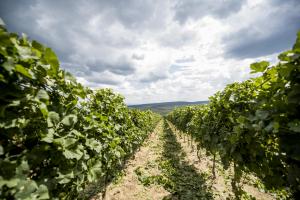
Podgoria Silvania’s Vineyards
As Podgoria Silvania says, “When nature blesses you with a treasure, you have to share it with the whole world.” And that’s what they are trying to do with their brilliant sparkling wines.
